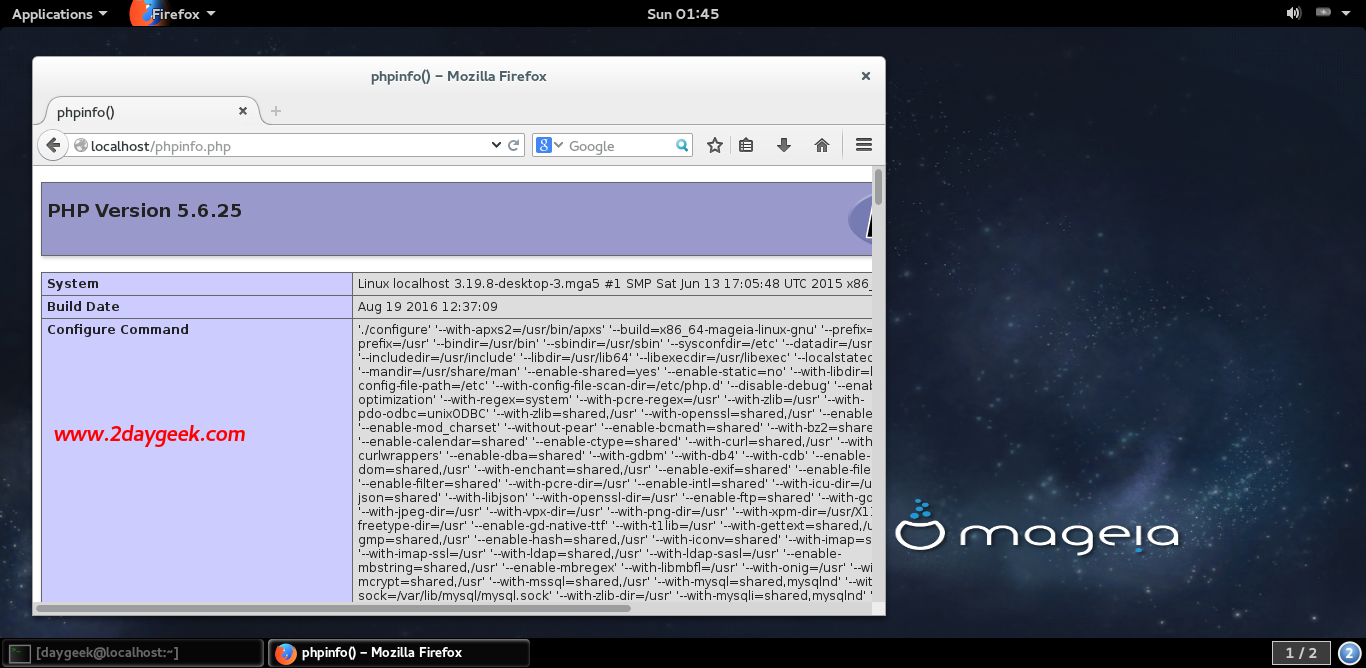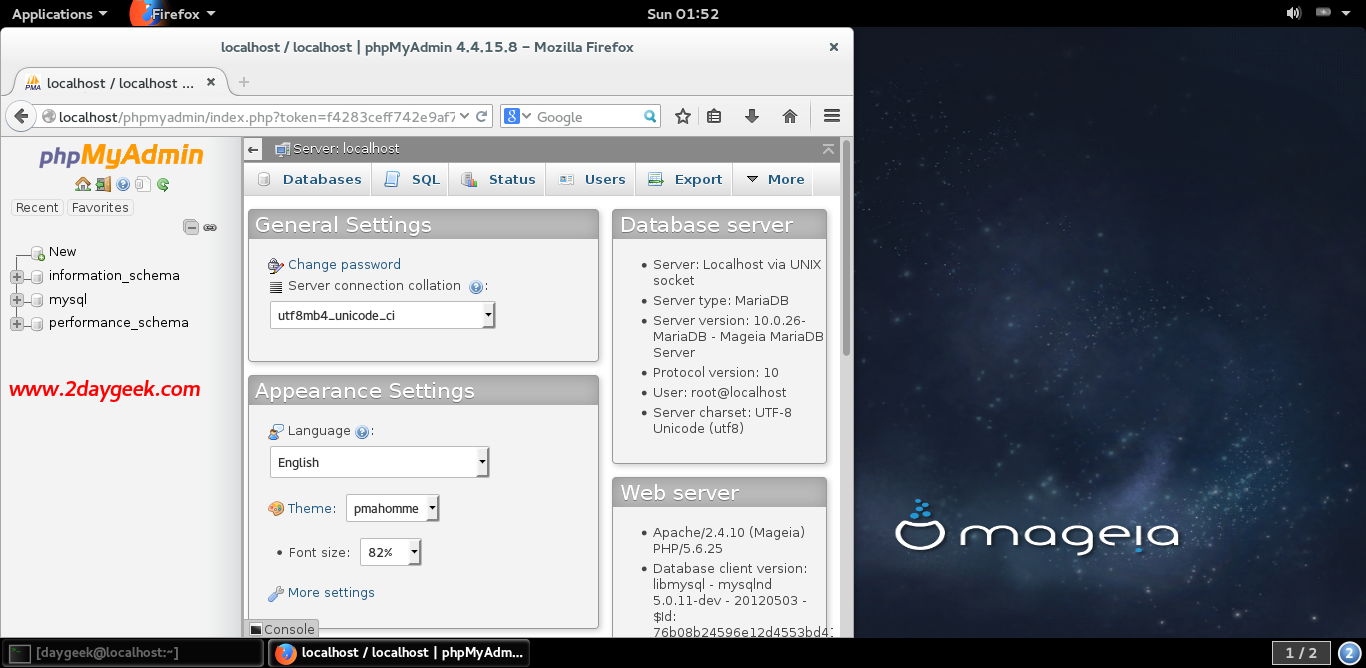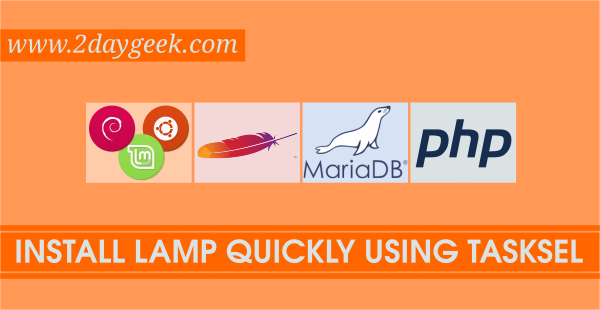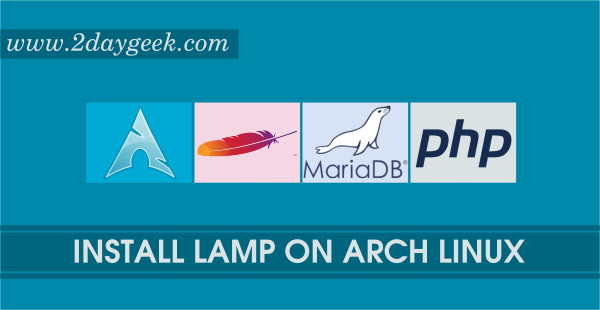4) PHP installation
Use the below command to install PHP. PHP initially called Personal Home Page, now it is called asHypertext Pre processor. PHP is a open source software which is designed for web development purpose. It is used for server-side scripting language as well as general-purpose programming language.
[Install php] $ sudo urpmi apache-mod_php php-mysql [Search PHP modules] $ urpmf php
Create test php file to check whether php is working with apache or not.
[Creating php info file] $ sudo echo "<?php phpinfo(); ?>" >>/var/www/html/phpinfo.php [Restart apache service] $ sudo systemctl restart httpd.service
Open your web browser and navigate to http://localhost/phpinfo.php or http://your-server-ip-address/phpinfo.php or http://127.0.0.1/phpinfo.php

5) Install phpMyAdmin
phpMyAdmin is a free open-source web-based administration tool for managing the MySQL, MariaDB servers which will help us to manage the database easily.
$ sudo urpmi phpmyadmin
Open your web browser and navigate to http://localhost/phpmyadmin or http://your-server-ip-address/phpmyadmin or http://127.0.0.1/phpmyadmin
Enter the UserName root and password which you set.

We are preparing all articles in-depth to understand by all level/stage Linux administrators. If the article is useful for you, then please spend less than a minute to share your valuable comments in our commenting section.
Please stay tune with us…Good Luck.



